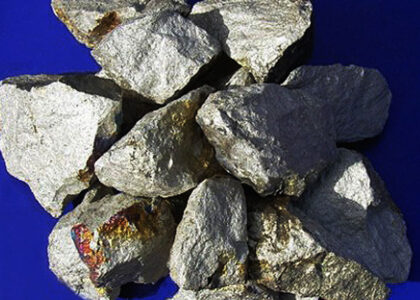The global dietary fiber market is projected to increase from US$ 12,343.6 million in 2024 to US$ 33,098.0 million by 2034. Global sales of dietary fiber are anticipated to increase at a CAGR of 10.3% over the forecast period.
Europe will have the largest market for dietary fibres in 2021. However, the region with the biggest market growth is East Asia. The market for dietary fibres is now dominated by soluble dietary fibre from various dietary fibres.
Obtain a preview of the market dynamics by downloading our free report in PDF format:
https://www.futuremarketinsights.com/reports/sample/rep-gb-3376
Future Market Insights (FMI) provides a perspective on the market growth trajectory for dietary fibres for the years 2022 to 2029 in a recent study. According to the report, 1.8 metric tonnes of dietary fibres were consumed globally in 2021, generating $7 billion in sales. Gains will continue to be driven by rising consumer awareness of the advantages of dietary fibres and the creation of fibrous new products by food companies.
Dietary fibres can be found in a variety of meals. However, they are mostly found in plant foods, including fruits, vegetables, and legumes. Based on the type, the two most common forms of dietary fibres on the market are soluble and insoluble. Plants provide the majority of these fibres, which are made up of cellulose and non-cellulosic polysaccharides. Dietary fibres are used in a variety of industries, including pharmaceuticals, food and beverage, and animal feed.
As healthcare professionals continue to encourage fibre intake as a key to improving long-term health, market players are significantly paying attention to value-added offerings. Big brand companies as well as small high-tech startups are rigorously exploring the potential of dietary fibres in their products, which is likely to promise new beginnings for the market stakeholders.
Consumers, leading fast-paced lives, have started to keep an eye on dietary recommendations, resulting in a move towards proactive healthcare and lifestyles. As consumers are becoming food explorers and newer trends are emerging at rapid pace, FMI’s analysis infers that the dietary fibres industry players are placing betting on R&D investments and new product launches.
Fibre intake has been alarmingly low in various regions, resulting into population-wide deficiency – known as ‘fibre gap’. As science behind dietary fibres expands, this ingredient has been witnessing renewed interest from young consumers for weight management benefits, while aging consumers tend to seek digestive health benefits.
Stakeholders Leverage White Spaces to Drive Sales Opportunities
According to the FMI study, the dietary fibres industry is likely to grow at CAGR of ~10% during the predefined timeframe. Obesity, diabetes, and other lifestyle diseases are on the rise, especially in developed regions, and as a result consumers are increasingly becoming health conscious and spending on high nutritional products. The study opines that a rise in consumer preference for maintaining a healthy diet and regulating body weight will provide a strong business outlook for the market players.
Use of soluble dietary fibres has been confined in functional F&B industry as a highly nutritive ingredient, while stakeholders are focused on identifying and leveraging the white spaces in their application, which range from pet food to cosmetics. Capabilities of corn fibre as an effective fibre source for pets, lignin as an emulsifier and efficient substitute for whole eggs in bakery products, pectin in food processing, and beta-glucan in cosmetic production are increasingly being explored. As the market continues to benefit from consumer shift towards plant-based ingredients and sugar substitutes, stakeholders are further exploring new sources of dietary fibres, apart from cereals & grains and fruits & vegetables.
For Additional Help Purchasing This Report, Please Get in Touch with Sales:
https://www.futuremarketinsights.com/checkout/3376
As per the study, dietary fibres industry players continue to witness growth opportunities in developed markets – Europe and North America, which collectively account for ~60% revenue share. In addition to increasing consumer spending on products with high nutritional value, government agencies in the regions are undertaking awareness campaigns to bring due attention towards the need for maintaining a balanced diet, thereby creating a high demand for dietary fibres. Market stakeholders are further eyeing on newer opportunities in Asia Pacific, particularly in countries such as China, Japan and South Korea, on the back of a notable trend for healthier eating.
FMI’s study identifies restraints that could possibly represent a threat to the lucrative stride of dietary fibres industry Research studies have found that excessive consumption of dietary fibres and their addition in processed foods can have adverse effects on human health, which may add to reluctance of consumers to adopt such ingredients.
The study opines that dietary fibres industry is on an upward swing with increasing number of small players entering into the space with new product offerings that align with consumers’ trends. Leading players continue to put emphasis on filling the fibre gap through R&D activities and product innovations.
Competitive Landscape
Dietary fibre manufacturers are pursuing strategic alliances and strategic partnerships with other manufacturers in order to enhance productivity and meet the demands of an ever-growing patient pool.
The industry is defined by a high level of capital expenditure and a complicated manufacturing process. Cost-effective manufacturing procedures can help establish global market sustainability. The (FDA) in the United States and the European Food Safety Authority (EFSA) in Europe are expected to stymie the entry of new businesses. Furthermore, the existence of a large number of producers is likely to raise entrance barriers.
Cargill, Inc. invested about USD 35 million in Europe in October 2019 to expand its current product line of sweeteners, starches, and texturizers to include soluble dietary fibres. This strategic project is the company’s first foray into soluble dietary fibres in Europe, and it was launched to give on-trend solutions to makers of high-quality products such as bakery & confectionery goods, cereals, and dairy products.
The key players in the market are BENEO, ADM, Cargill, Incorporated, DuPont, Ingredion Incorporated, Roquette Frères, Emsland Group, Kerry Inc., The Green Labs LLC, Nexira, Tate & Lyle, Farbest Brands, Taiyo International, AGT Food and Ingredients, Batory Foods.
Frequently Asked Questions
- How much is the Dietary Fibres industry current worth?
- At what CAGR is the market expected to grow?
- How was the performance in the last five years?
- What are the key trends boosting Dietary Fibres sales?
- How are market players reacting to the new developments in the market?
- Which are the major countries driving demand for Dietary Fibres?
- Who are the major players in the Dietary Fibres market?
About Future Market Insights (FMI)
Future Market Insights, Inc. (ESOMAR certified, recipient of the Stevie Award, and a member of the Greater New York Chamber of Commerce) offers profound insights into the driving factors that are boosting demand in the market. FMI stands as the leading global provider of market intelligence, advisory services, consulting, and events for the Packaging, Food and Beverage, Consumer Technology, Healthcare, Industrial, and Chemicals markets. With a vast team of over 400 analysts worldwide, FMI provides global, regional, and local expertise on diverse domains and industry trends across more than 110 countries.
Contact Us:
Nandini Singh Sawlani
Future Market Insights Inc.
Christiana Corporate, 200 Continental Drive,
Suite 401, Newark, Delaware – 19713, USA
T: +1-845-579-5705
For Sales Enquiries: sales@futuremarketinsights.com
Website: https://www.futuremarketinsights.com
LinkedIn| Twitter| Blogs | YouTube




